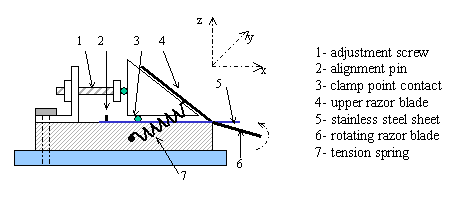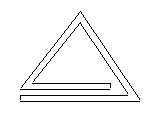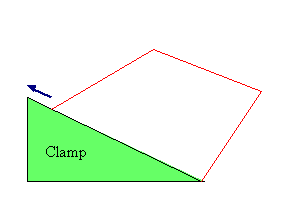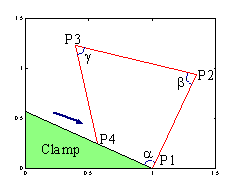
The mechanism that we developed for
folding the stainless steel sheets is shown in figure above. The
folding mechanism is operated in the follwing manner:
- First, the clamp is lifted and a pre-cut and pre-scored stainless steel piece (5) is placed on the alignment pins (2).
- The clamp is then put on top of the steel, the springs (7) are put in place to hold the clamp down, and adjustments (using two screws with ball bearings on their tips (1)) are made so that the clamp edge lines up with the steel bend line.
- Finally, the bottom razor blade (6) is rotated to complete the bend. This process is repeated for all of the bends.
Determination of Folding Angle Sequence
 |
 |
 |
| Desired
Triangular Cross-Section for the Stainless Steel Beams |
Undesirable
Configuration When Folding the Beam |
Desirable
Configuration When Folding the Beam |
•
To acheive the desired triangular cross section for the stainless steel beams requires three sequential bends to the flat steel sheet. Although the folding fixture is currently operated by hand, the aim is to fully automate the process. As such, when the folds are completed, we want the structure to naturally tend to assume the triangular cross section so it can then be fed into a triangular channel and sealed in place. This means that as the third fold is being completed, we want the edge P3P4 to travel down the clamp and not up (as was observed in some initial trials).
To acheive the desired triangular cross section for the stainless steel beams requires three sequential bends to the flat steel sheet. Although the folding fixture is currently operated by hand, the aim is to fully automate the process. As such, when the folds are completed, we want the structure to naturally tend to assume the triangular cross section so it can then be fed into a triangular channel and sealed in place. This means that as the third fold is being completed, we want the edge P3P4 to travel down the clamp and not up (as was observed in some initial trials).